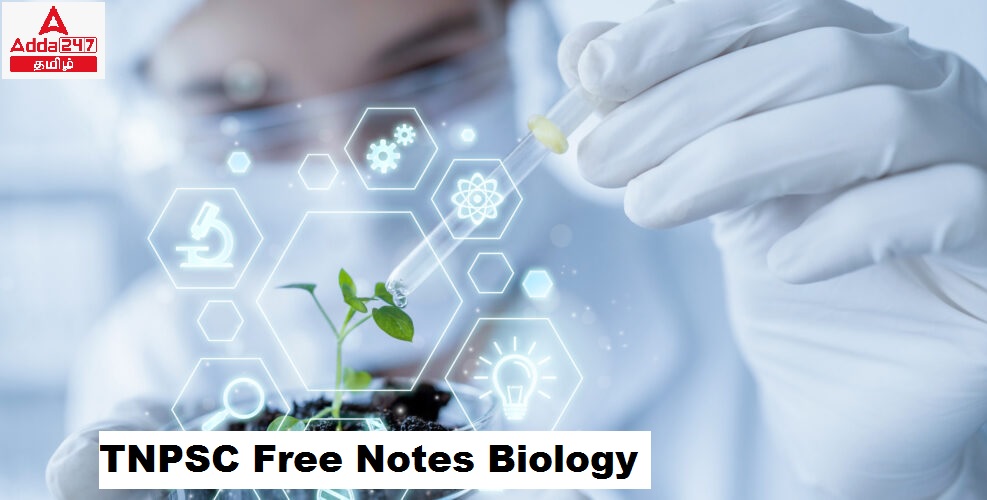இந்தக் கட்டுரையில், TNPSC குரூப் 1, குரூப் 2, குரூப் 2A, குரூப் 4 மாநிலப் போட்டித் தேர்வுகளான TNUSRB, TRB, TET, TNEB போன்றவற்றுக்கான முறைகள் இலவசக் குறிப்புகளைப் பெறுவீர்கள்.தேர்வுக்கு தயாராவோர் இங்குள்ள பாடக்குறிப்புகளை படித்து பயன்பெற வாழ்த்துகிறோம்.
Parathyroid gland
In human, four tiny parathyroid glands are found in the posterior wall of the
thyroid glands.
This gland is composed of two types of cells, the chief cells and oxyphil
cells.
The chief cells secrete parathyroid hormone (PTH) and the functions of
oxyphil cells are not known.
Parathyroid hormone or Parathormone (PTH)
PTH is a hypercalcemic hormone.
It is a peptide hormone involved in controlling the calcium and phosphate
homeostasis.
The secretion of PTH is controlled by calcium level in the blood.
It increases the blood calcium level by stimulating osteoclasts to dissolve
the bone matrix.
As a result, calcium and phosphate are released into the blood.
PTH enhances the reabsorption of calcium and excretion of phosphates by
the renal tubules and promotes activation of vitamin D to increase calcium
absorption by intestinal mucosal cells.
Functions of Parathormone
The parathormone regulates calcium and phosphorus metabolism in the
body.
They act on bone, kidney and intestine to maintain blood calcium levels.
Parathyroid Dysfunction
The secretion of parathyroid hormone can be altered due to the following
conditions. Removal of parathyroid glands during thyroidectomy (removal
of thyroid) causes decreased secretion of parathormone.
The conditions are Muscle spasm known as Tetany and painful cramps of
the limb muscles.
Thymus gland
Thymus gland is partially an endocrine and partially a lymphoid organ.
It is a bilobed structure located just above the heart and aorta, behind the
sternum.
It is covered by fibrous capsule and anatomically it is divisible into an outer
cortex and an inner medulla.
It secretes four hormones such as thymulin, thymosin, thymopoietin and
thymic humoral factor (THF).
The primary function of thymus is the production of immuno competent
‘T’ lymphocytes which provides cell mediated immunity.
Pancreas (Islets of Langerhans)
Pancreas is an elongated, yellowish gland situated in the loop of stomach
and duodenum. It is exocrine and endocrine in nature.
The exocrine pancreas secretes pancreatic juice which plays a role in
digestion while the endocrine portion is made up of Islets of Langerhans.
The Islets of Langerhans consists of two types of cells namely alpha cells
and beta cells.
Human pancreas has one to two million islets of langerhans.
In each islet about 60% cells are beta cells, 30% cells are alpha cells and
10% cells are delta cells.
The alpha cells secrete glucagon, the beta cells secrete insulin and delta
cells secrete somatostatin.
**************************************************************************
| Adda247 TamilNadu Home page | Click here |
| Official Website=Adda247 | Click here |




